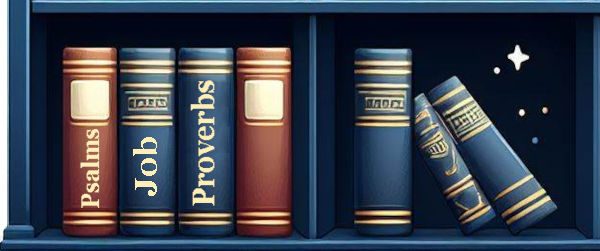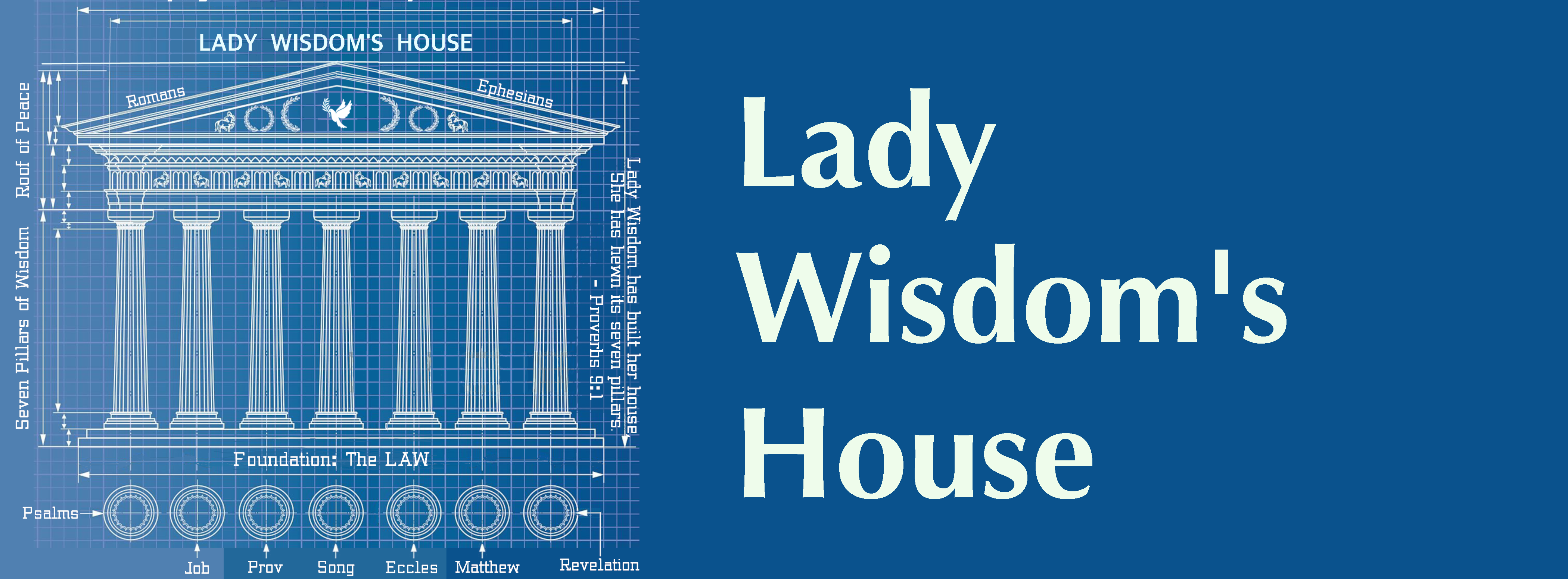Theme of Books
1627 words long.
Published on 2024-05-21

Books
Let’s consider what is and is not a pillar. From the meaning of Solomon’s two bronze pillars from I Kings 7:21, Jachin and Boaz, we get two vital properties of pillars, “he will establish” and “in him is strength”.
Being strong is what we need for today, to navigate horizontal relationships in the present. The Harvest Pattern is closely tied to strength. All interpretations of parables and sayings rooted in daily individual behavior (such as training in morality, ethics and worship) tap into this attribute of pillars.
Being established is about tomorrow. It has to do with time, with planning to overcome challenge after challenge and endure to the end. Pillars are tall. They run from floor to ceiling, to hold up the building. That means they traverse time. When the Bible’s words of wisdom touch on prophecy, they tap into this attribute of pillars. The Growth Pattern based on the twenty-eight times from Ecclesiastes 3 is more closely affiliated with this.
The Seven Pillars often overlap the Pentateuch in language and theme. Why are Exodus or Deuteronomy not pillars? It is because they are the floor. They are the foundation. This is not speculation for the Word declares it. (See The Law Pattern for the implications of this.) Consider the time when Moses and the elders met with God:
Moses and Aaron, Nadab and Abihu, and the seventy elders of Israel
went up and saw the God of Israel. Under his feet was something
like a pavement made of lapis lazuli, as bright blue as the sky.
- Exodus 24:9-10
Lapis lazuli (or in some translations, sapphire) was the pavement, the floor beneath God’s feet. Jewish tradition holds that the original Ten Commandments were carved from lapis lazuli. Then Ezekiel adds this to the record:
Above the vault over their heads was what looked like a
throne of lapis lazuli, and high above on the throne was a figure
like that of a man. I saw that from what appeared to be his waist up
he looked like glowing metal, as if full of fire, and that from there
down he looked like fire; and brilliant light surrounded him.
Like the appearance of a rainbow in the clouds on a rainy day,
so was the radiance around him.
This was the appearance of the likeness of the glory of the LORD.
When I saw it, I fell facedown, and I heard the voice of one speaking.
Ezekiel 1:26-28
Remember the rainbow; we will get to it later. If God’s throne and the ground beneath His feet are lapis lazuli, as well as the Ten Commandments, this makes the Books of Moses the floor of God’s house. Naturally, the floor meets each pillar solidly.
As a collection, why do these seven books make sense as the pillars? First, they run from floor to ceiling. Job was the first book written and Revelation the last. Matthew stands first in the New Testament but through its genealogy traces all the way back to Abraham. Psalms is longest and was written over the course of a millennia; it took the most time to complete. Five of the pillars are the Old Testament’s Books of Wisdom, long recognized by scholars as a distinct unit within the Jewish corpus. Three were penned by Solomon, declared wisest by Christ himself. Those three correspond to the three problem soils at the heart of Jesus’ parable of the soils. For example, Proverbs 3:21 says, “My son, do not lose sight of these—keep sound wisdom and discretion”, a warning to not let anything snatch the seed away. Solomon said that the heart of the wise is in the House of Mourning; Job mourned deepest. As for Matthew, he refers pointedly to Solomon in important passages and declares of Jesus that “something greater than Solomon is here”. And Job and Psalms name Leviathan, Proverbs the serpent, and Revelation the Beast from the Sea. Yes, they fit.
The earlier chapter about the Seven Pillars of Wisdom explained how Hannah’s prayer of praise in I Samuel 2 pointed to the pillars. Her prayer is like a song, mentions “thunder in heaven”, focuses on a relief from barrenness, the number seven and God’s setting the world upon “the pillars of the earth”. The schema of her prayer matches the seven phases of the Growth Pattern, in order. Her prayer is not the only prophecy that summarizes the distinctives of the pillars.
The Book of Habakkuk consists of three chapters but may be broken into seven sections. The first section has a multi- part question that serves as a table of contents into the rest of the book. Each section has “time words”.
- Hab 1:1-4. Habakkuk’s First Complaint. “How long” (1:2), one time phrase.
- Hab 1:5-11. The Lord’s First Answer. “Your days” (1:5) and “Dusk / Evening” (1:8 NIV/ESV), two time phrases.
- Hab 1:12-2:1. Habakkuk’s Second Complaint. “Everlasting” (1:12), “you destined them to punish us” (1:12 HCSB), “killing nations forever" (1:17 ESV), three time phrases. (Each time phrase here is doubled with a synonymous phrase.) Also appearing three times is the word “will”, to signify how the prophet is waiting for God to act in the future.
- Hab 2:2-5. The Lord’s Second Answer. The word “will” occurs four times in 2:3-4. It is coupled with these time promises: (1) “awaits an appointed time”, (2) “it speaks of the end and will not prove false”, (3) “though it linger, wait for it;” (4) “it will certainly come and will not delay”. Thus, there are four time promises.
- Hab 2:6-20. Five woes. The first of the five woes contains the word “will” five times. All the woes have a time reference, such as “how long must this go on” (2:6) or “guidance” (2:19).
- Hab 3:1-18. Habakkuk’s Prayer. This section makes six references to God’s future judgment, with most of the references doubled. The section begins by using the words “On Shigionoth”, indicating musical tempo, a reference to time.
- Hab 3:19-21. Habakkuk’s Song of Praise. This begins with six disasters, followed by a praise consisting of seven parts.
For a detailed analysis of Habakkuk, see these articles on each section, plus one that dives deep into God's war against evil empires:
If you paid attention, the first section has one part, the second two, on up to the seventh that has seven parts. If you sum the numbers one to seven you get the seventh perfect number: twenty-eight. Thus, Habakkuk intentionally draws attention to the number twenty-eight (the number of days in a sidereal month or times in Ecclesiastes 3) and a relentless focus on time and the future. The prophet is pointing to Ecclesiastes 3 and the Growth Pattern.
That is not all. The final section is explicitly about longing for a harvest amid barrenness. Does the rest of the book follow the Harvest Pattern? Consider the second section, which prophesies the Babylonian Captivity, a time of suffering in the wilderness. This corresponds to plowing, the second harvest phase. Then consider the fifth section, the five woes. The fifth phase of the Harvest Pattern is plucking, when the Father disciplines his children to restore proper focus and habits. The woes are judgments against idolatry, the essence of the bad habits that must be corrected. The sixth section of Habakkuk has the phrase “His glory covered the heavens and his praise filled the earth”. This matches the sixth phase of the Harvest Pattern, namely producing the harvest, when Christian evangelism spreads the Gospel to the world. Lastly, the seventh section ends in joy and peace, matching the seventh phase of the harvest Pattern, peace.
Taken together, Habakkuk has structured his prophecy in such a way as to point to both the Growth Pattern and the Harvest Pattern, numerically and thematically. Pillars are not mentioned directly, but in verses 1:11-12 the Babylonians are characterized as worshipping their own strength and being established by God to execute judgment, the two principal characteristics of pillars.
In the earlier table, Job is specially associated with this category. That is because Job’s most profound prayer was that his words be written down:
Oh that my words were written!
Oh that they were inscribed in a book!
Oh that with an iron pen and lead
they were engraved in the rock forever!
For I know that my Redeemer lives,
and at the last he will stand upon the earth.
And after my skin has been thus destroyed,
yet in my flesh I shall see God,
whom I shall see for myself,
and my eyes shall behold, and not another.
My heart faints within me!
- Job 19:23-27 ESV
God’s answer to Job’s prayer caused the Bible to be begun to be written. That certainly makes Job a pillar.
One last note about the Books category. A few books of the Bible explicitly warn against adding to God’s words. Five of these seven pillars have such warnings. Only Psalms and Song of Songs lack them. These strong warnings against tampering with the words are God's way of telling us that these books are special. They are also God's way of ensuring that detailed analysis and careful reflection on every phrase and connection is profitable. If these books were littered with errors, only vague conclusions could be drawn from them. Instead, we can build our lives and our civilization upon them. Their words are strong. They will endure.
Here are links to the sections on all seven themes common between the books that constitute the Seven Pillars of Wisdom:

